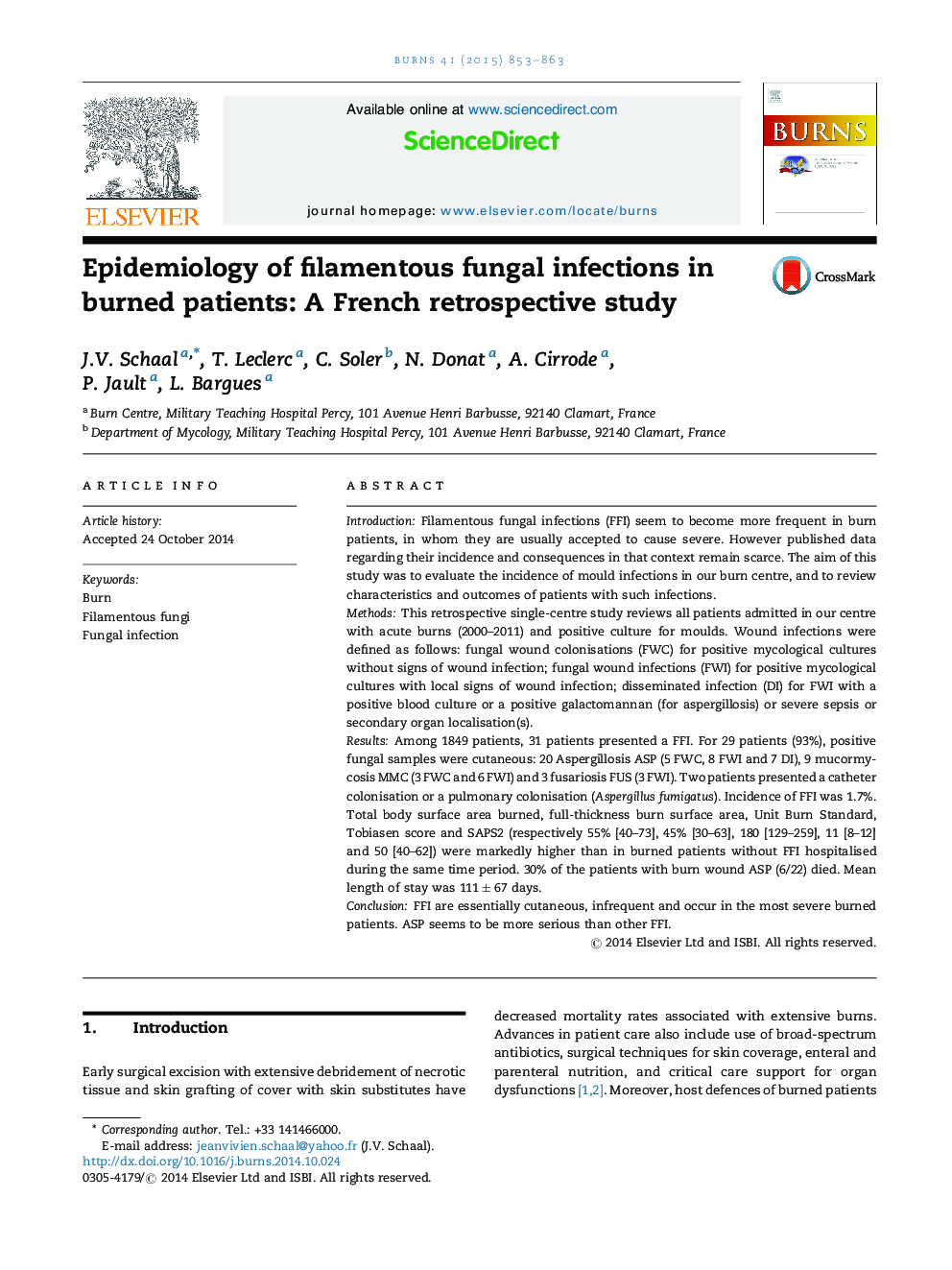| Article ID | Journal | Published Year | Pages | File Type |
|---|---|---|---|---|
| 3104307 | Burns | 2015 | 11 Pages |
•Incidence of filamentous fungal infections (FFI) was 1.7%.•FFI are essentially cutaneous and occur in the most severe burned patients.•The patients do not present the classic immunosuppression risk factors.•30% of the patients with burn wound aspergillosis died.•This series is the first one in Europe to describe burned patients with FFI.
IntroductionFilamentous fungal infections (FFI) seem to become more frequent in burn patients, in whom they are usually accepted to cause severe. However published data regarding their incidence and consequences in that context remain scarce. The aim of this study was to evaluate the incidence of mould infections in our burn centre, and to review characteristics and outcomes of patients with such infections.MethodsThis retrospective single-centre study reviews all patients admitted in our centre with acute burns (2000–2011) and positive culture for moulds. Wound infections were defined as follows: fungal wound colonisations (FWC) for positive mycological cultures without signs of wound infection; fungal wound infections (FWI) for positive mycological cultures with local signs of wound infection; disseminated infection (DI) for FWI with a positive blood culture or a positive galactomannan (for aspergillosis) or severe sepsis or secondary organ localisation(s).ResultsAmong 1849 patients, 31 patients presented a FFI. For 29 patients (93%), positive fungal samples were cutaneous: 20 Aspergillosis ASP (5 FWC, 8 FWI and 7 DI), 9 mucormycosis MMC (3 FWC and 6 FWI) and 3 fusariosis FUS (3 FWI). Two patients presented a catheter colonisation or a pulmonary colonisation (Aspergillus fumigatus). Incidence of FFI was 1.7%. Total body surface area burned, full-thickness burn surface area, Unit Burn Standard, Tobiasen score and SAPS2 (respectively 55% [40–73], 45% [30–63], 180 [129–259], 11 [8–12] and 50 [40–62]) were markedly higher than in burned patients without FFI hospitalised during the same time period. 30% of the patients with burn wound ASP (6/22) died. Mean length of stay was 111 ± 67 days.ConclusionFFI are essentially cutaneous, infrequent and occur in the most severe burned patients. ASP seems to be more serious than other FFI.
